Alive Girl Molly Rose Lieberman Theta February 24 - March 25, 2023
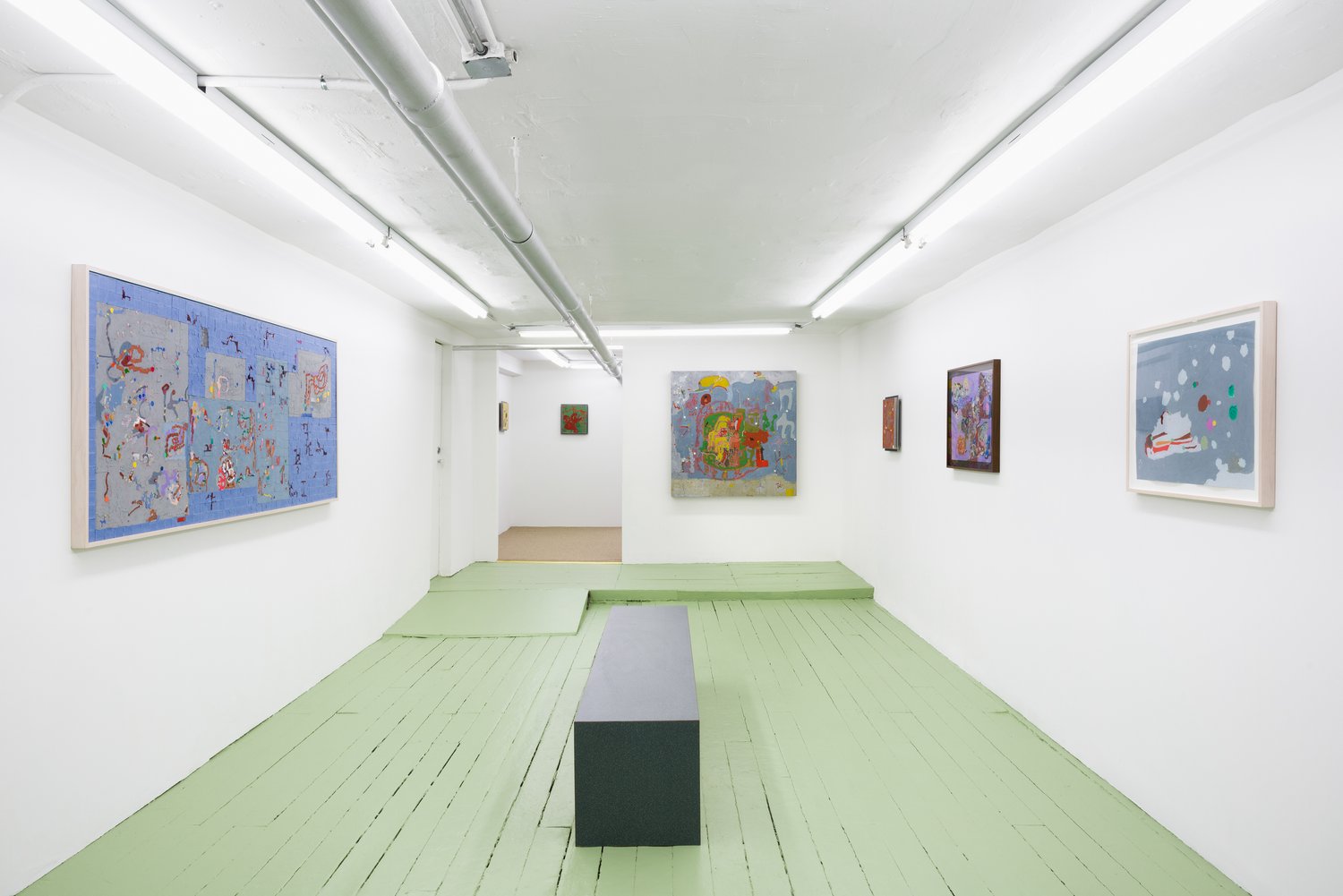
Installation view of “Alive Girl”. All images courtesy of Theta, New York.
For her first solo exhibition at Theta, Molly Rose Lieberman presents a variety of structures that deconstruct and lend meaning to a 24 hour cycle. These intuitive means of organizing a day become an interpretive framework for the paintings, drawings, and sculptural interventions that comprise “Alive Girl.”
Lieberman’s work is equal parts many things. According to the text accompanying the show the work is as much the fruits of a downtown philosophy of life as it is a first person account of an ongoing romance between the artist and her day job in the information rich coffers of the history of art. The text positions the artist as staking out a theoretical foundation built upon some of the latest ruminations concerning the long-accepted post-modern doctrine, nuanced in this context for a painting specific dialogue, that, simply put, art is life. Even so, it’s careful to articulate that in this instance, art is Molly Rose Lieberman’s life and the objects she creates, as an extension, are meant to be lived. It’s fitting then that the unapologetically scrappy, yet beautiful body of work on view at Theta is as much a group of objects as it is a set of lived conditions.
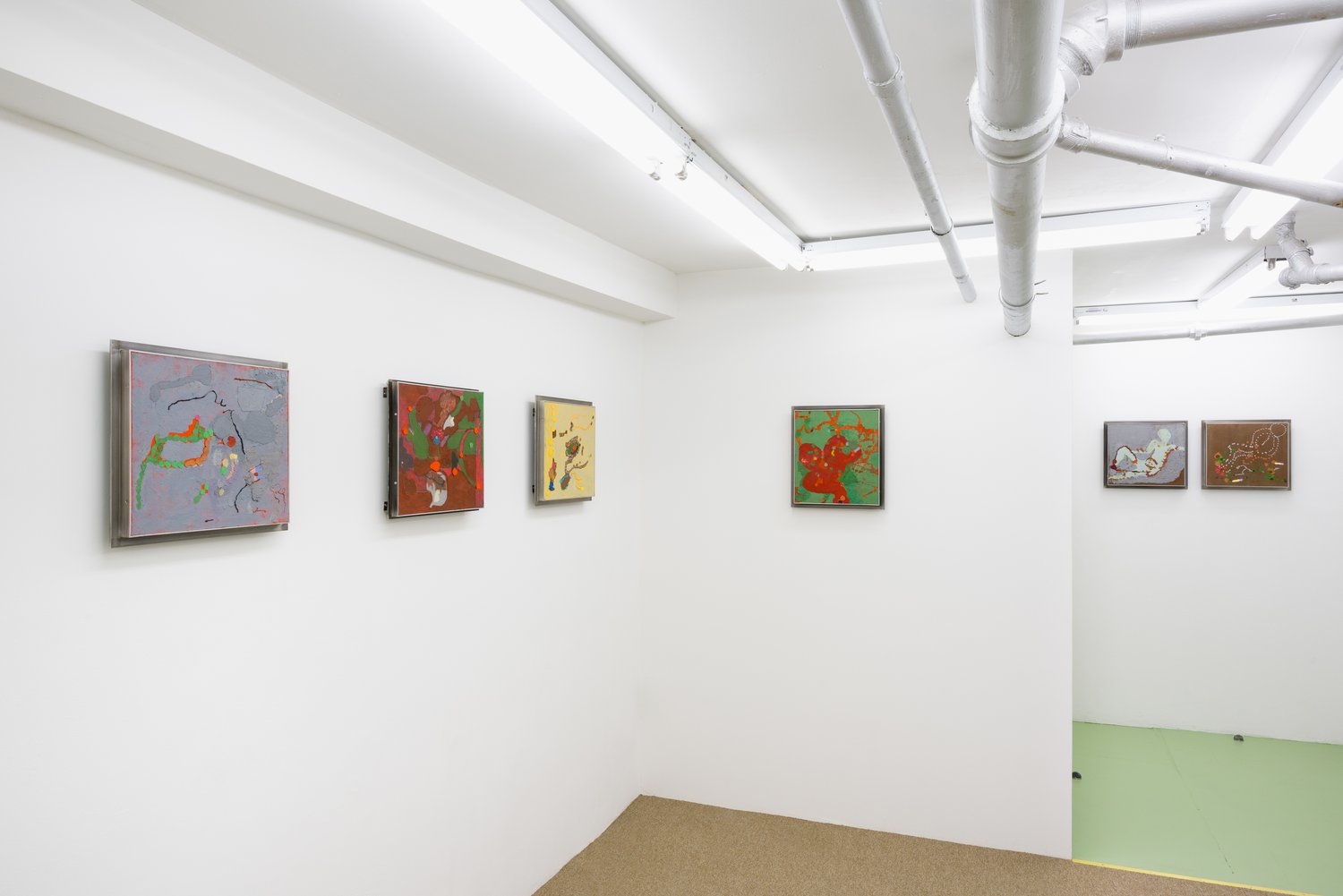
Installation view of “Alive Girl”.
Take for example the eight smallest paintings on view. All but one are embedded in what appear to be unpolished metal frames with sharp planes of material cutting outwards in line with the back face of the painting. These works sit a few inches off the wall, and are held in place by custom hardware fashioned with node-like spherical chrome bolts installed in each of their four corners. Absent any traditional ornamentation, the ceremony of separation that would normally delineate what is art, and what is the rest of the world, has been replaced with something less clear. I love these frames. Their design feels totally arbitrary yet exacting and necessary.
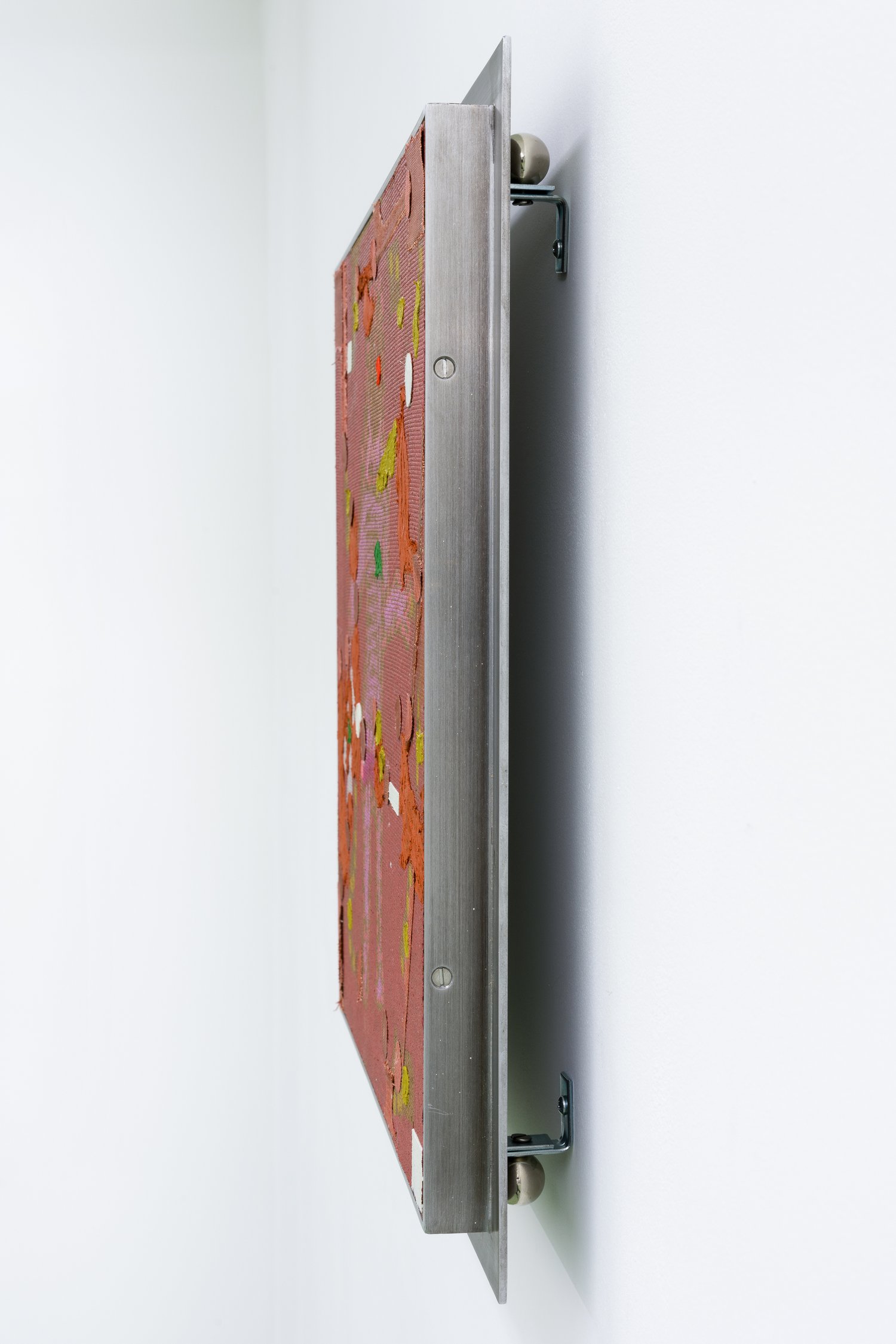
Side view of October 22, 2022, 2023.
All the frames in the show are found. In the case of these works what makes the effect of the repurposing more enchanting is the frame’s reversal— the sides that were originally intended to be front facing and decorative instead face the walls. Reenforced by Lieberman’s decision to paint on the backside of masonite, this orientation positions the viewer on the inside of the work, looking out. The frames present and deny presentation simultaneously, surrounding the paintings in a playfully seductive paradox: “Look at me, don’t look at me.”
This allusion to a reversal of the viewer’s perspective should not be confused as a suggestion that a visit to the show is a visit to some alternative dimension that exists within or just beyond a painting’s surface. Like many of the irreverent gestures on display, the details of the framed works that challenge our expectations are a thoughtful exercise in transparency. Consider the chrome nodes on the back sides of the paintings, which are figuratively and literally points of reflection, and in their fish-eyed mirroring reveal more than the eye can normally see. They distort and compress their physical surroundings, including the viewer of the painting, into a single point of visual information contained within the work.
A similar loop occurs in the acknowledgment that Lieberman has presented more of these mirrored spheres in a constellation-like formation within a group of pre-existing dips and deviations across the gallery’s floor. It’s in this work, aptly titled “Stuck-on inner feeling” that Lieberman most legibly converges the mechanisms of her own interiority with the tangible reality of the exhibition space. The show and our experience of it is again reflected back to us, and the viewer’s consciousness becomes as important a material as any other aspect of the work.
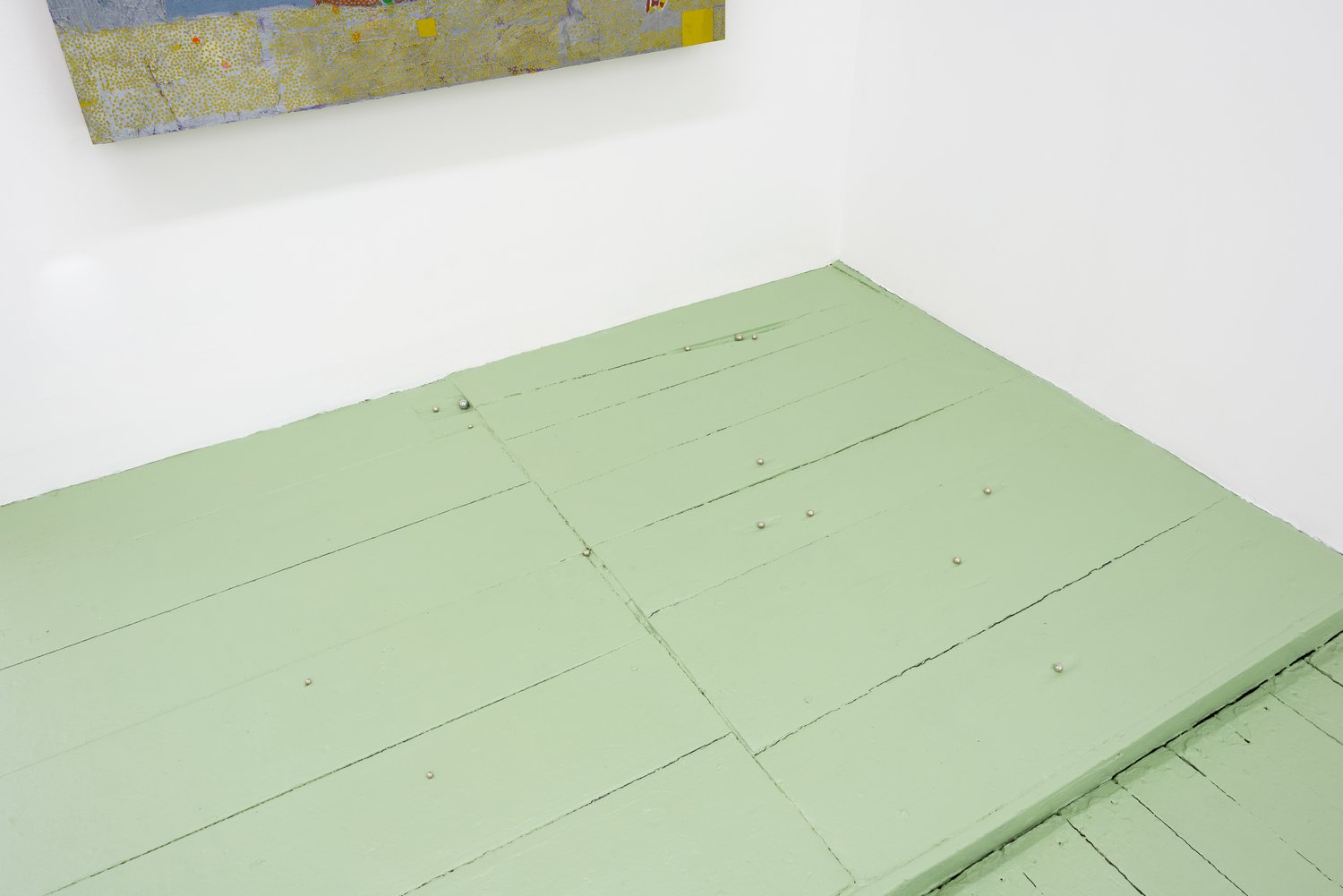
Stuck-on inner feeling, 2023.
This piece also provides a framework for navigating a similar visual motif that Lieberman employs across her paintings. Although two-dimensional and without any concrete indication of reflectivity, groups of dots populate the surfaces of her works to varying results. Sometimes they contribute to compositional structure and even compound toward a loose air of representational space, but mostly they break-up the surfaces in support of, or against a possible inhabitable atmosphere within an otherwise abstract configuration. In what could be read as a diptych in the back of the gallery, Lieberman utilizes these dots to articulate two figures– one in each painting.
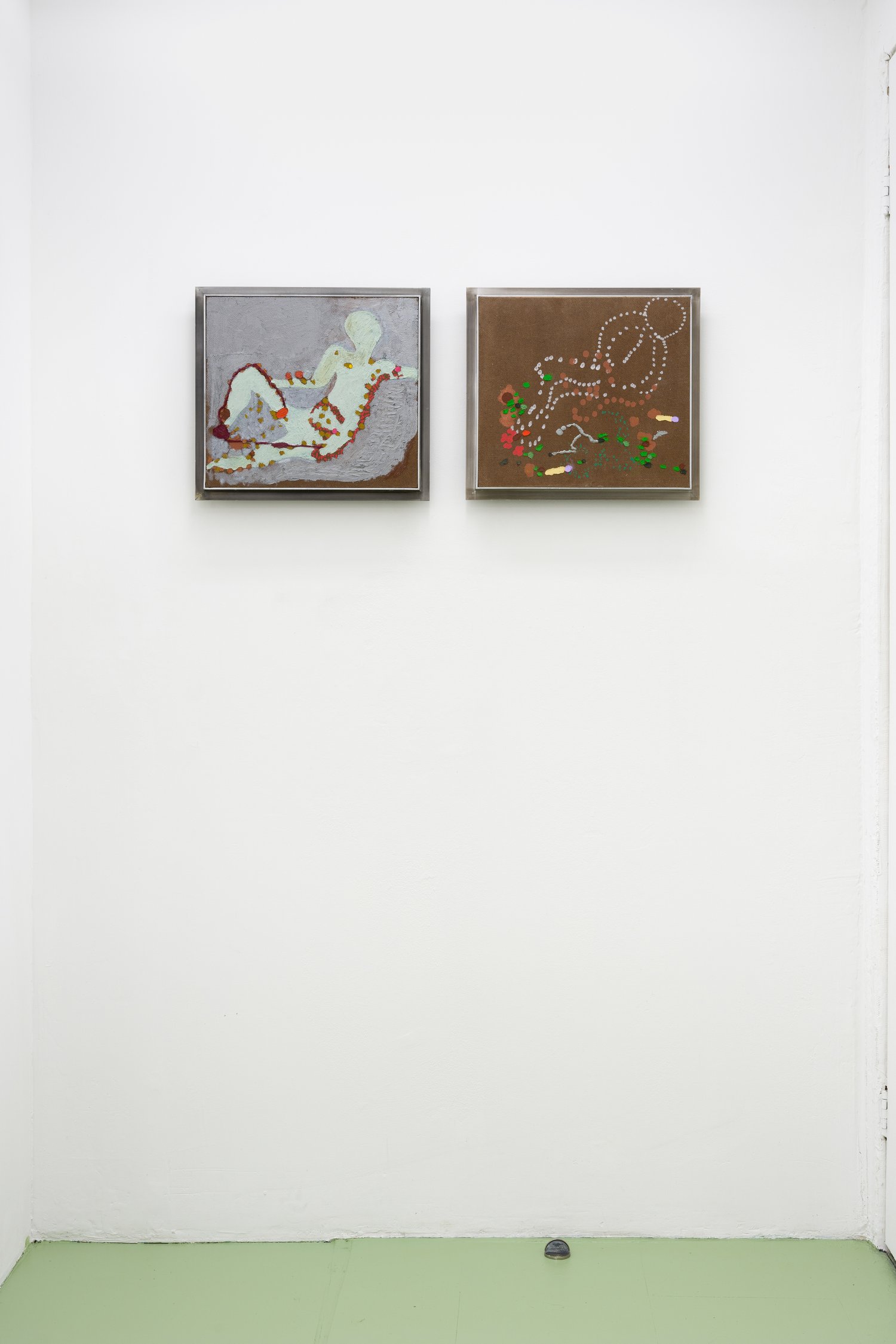
Left: In case you must ignore (ICYMI 1), 2023. Right: In case you must insist/I need my hips for this (ICYMI 3), 2023.
They’re very different paintings, but have similar compositions as the subjects are almost identical in their repose. In this case the dots are the connective tissue to visualize two bodies and their differences, but one should be careful not to move through this exhibition with the sole intention of connecting the dots. Embrace the enigma. There is no mystery to be solved or eureka to be had. Lieberman has already pulled back the curtain. There is no man, only an alive girl.